TW-1C – NORAD Cat ID 40926 (Decayed 2-27-2021 per Space-Track).
Category: TW-1
TW-1A Telemetry

TW-1A Telemetry
looks like a great amount of data 37 Frames
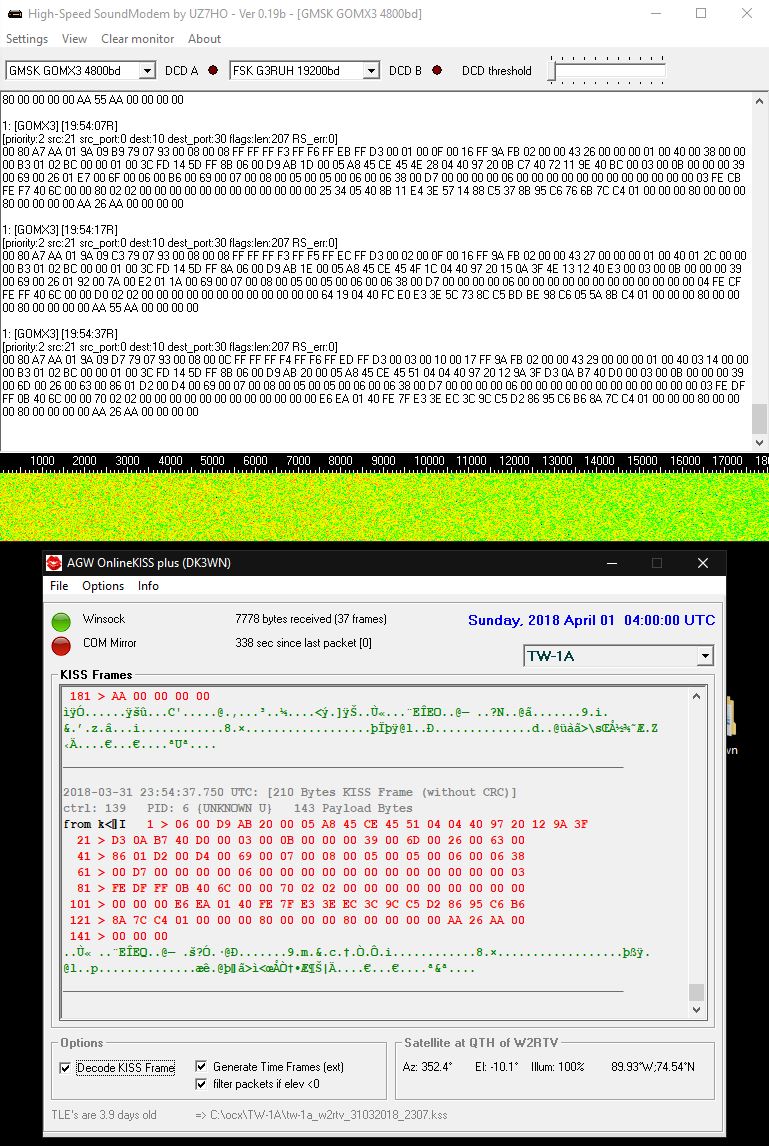
TW-1A TLM 09/03/18

Tianwang-1C (TW-1C / NJFA-1) 4k8 telemetry
11:15-11:24 UTC, 28 Oct 2016, Ele 13 deg, 435.645MHz 4800bps GMSK
HS_soundmodem set “GMSK GOMX3 4800bd”
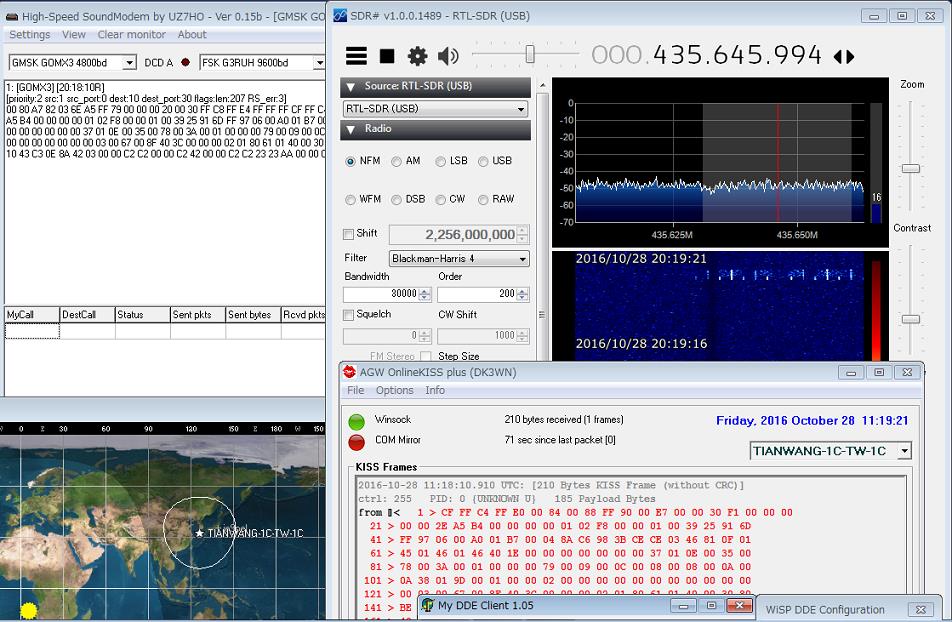
TIANWANG 1A (TW-1A) 4K8 Telemetry
23:34 UTC soundmodem set “GMSK GOMX3 4800bd”

TIANWANG 1C (TW-1C) 4K8 Telemetry
00:14 UTC soundmodem set “GMSK GOMX3 4800bd”

TW-1A, TW-1B, TW-1C update
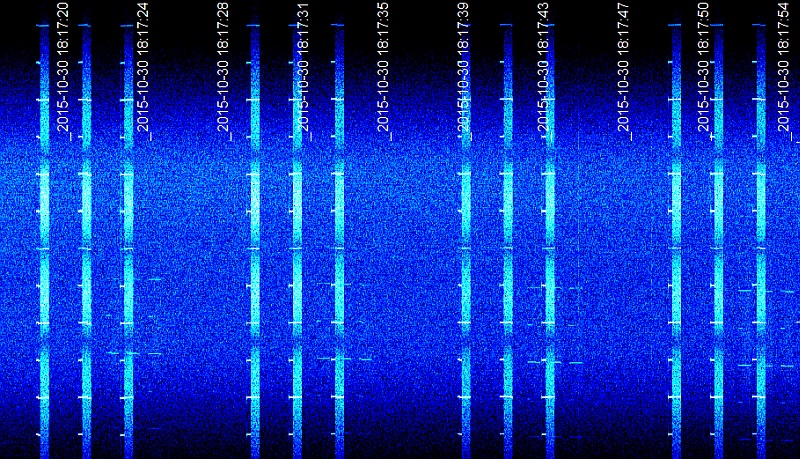
TW-1A 435.645 MHz 4k8/9k6 GMSK, 1W, 10 second transmit interval
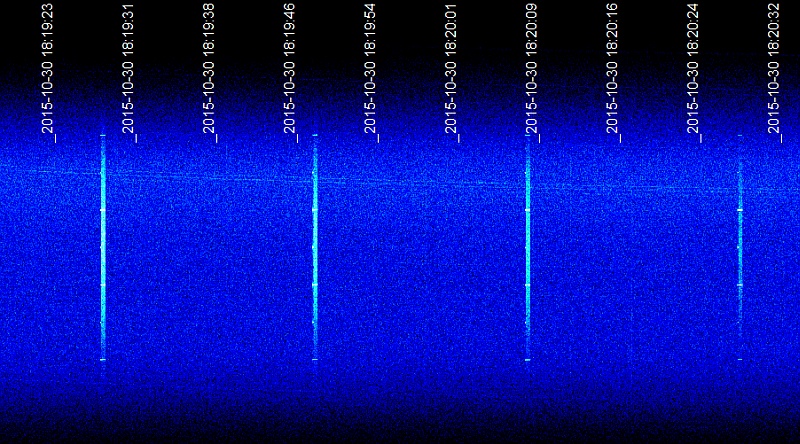
TW-1B 437.645 MHz 4k8/9k6 GMSK, 1W, 20 second transmit interval

TW-1C 435.645 MHz 4k8/9k6 GMSK, 1W, 10 second transmit interval
ADCS
Three-axis stabilization and control are realized by applying a momentum wheel combined with the active magnetic control. Also a new GPS/BD receiver will play an important role in the subsystem.
EPS
The power supply system consists of 4 solar cell string panels and 4 battery string power pack. The system have 3 input channels with independent power-point setting giving an input power capacity of 30 W, the average input conversion efficiency approaches to 93%. Two regulated power buses with 3.3V@5A and 5V@4A are provided. And a battery under-voltage and over-voltage protection is designed.
OBDH
The mission computer is based on the 32-bit ARM architecture and freeRTOS real-time operating system.
Structure, Thermal control
For TW-1A, a 10 10 30 cm3 3U CubeSat structure is choose and two 10 10 20 cm3 2U CubeSat structures are choose for TW-1B and TW-1C. Passive control methods in the form of thermal coatings and insulation are preferred to control the heat radiation and absorption.
TT&C
The TT&C subsystem is consist of one half-duplex transceiver and one deployable antenna. The transceiver combines telemetry, tele-command and beacon capability in a single board and is available in 9.6 kbps GMSK downlink/ uplink. Also it can also transmit CW beacon periodically. For the convenience of most of the amateurs to listen to the satellites, we will prefer the CW beacon containing the basic information of the satellites as well as some HK. The deployable antenna system consists of four monopole aerials combined in a phasing network in order to form a signal circular polarized antenna. The antenna radiation pattern is close to omnidirectional. And they will deploy from all four sides of the structure upon command.
TW-1B signal
437.645 MHz 4k8 GMSK
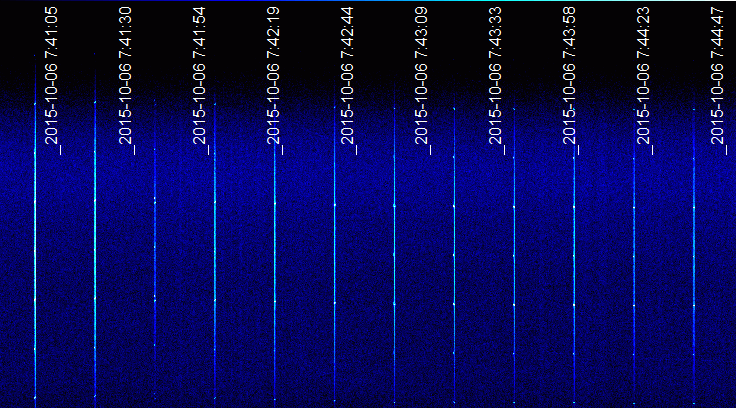
TW-1 satellites received
TW-1A/C 435.635 high speed GMSK

TW-1B 437.636 9600bps GMSK
